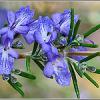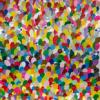
David Sinclair strikes again
#451
Posted 01 June 2014 - 09:15 PM
#453
Posted 04 June 2014 - 07:23 PM
http://www.thefix.co...iction?page=all
#454
Posted 04 June 2014 - 08:43 PM
I somehow stumbled across this article about a NAD clinic and thought it might be relevant.
http://www.thefix.co...iction?page=all
In their "how it works" section, they say:
There is a preponderance of low levels of NAD present in Western society as it is mostly lost in cooking and food processing. What little remains is broken down by stomach acid, degraded before its absorbed from the digestive tract.
... which is pretty much nonsense. I guess the remaining question is "Does it work at all?" I dunno. It might do something for addicts. If they're doing something that makes a sickly addict feel a lot better, that might help them stay clean at least for a while. It doesn't sound like the success rate of the program is well-documented.
#455
Posted 04 June 2014 - 11:41 PM
... which is pretty much nonsense. I guess the remaining question is "Does it work at all?" I dunno. It might do something for addicts.
Yeah I agree that's BS. Still, it makes some sense that addictive behaviors might in part arise not just from dopamine / endorphin signaling but also from an inefficiency in its energy production - breaking a pattern of behavior is quite mentally taxing.
#456
Posted 07 June 2014 - 03:03 AM
niner I responded though badly, do get back - I will be up In Boston and I do want your questions.
#457
Posted 09 June 2014 - 09:10 PM
niner I responded though badly, do get back - I will be up In Boston and I do want your questions.
Could members and users post questions here for you to consider?
#458
Posted 10 June 2014 - 06:00 PM
APBT- pose questions, if I don't know the answers (which is likely) I will ask them to relevant scientists next week,
if possible on camera
#459
Posted 10 June 2014 - 11:08 PM
to age or not to age, much gratitude for your offer to do this.
My questions, in no particular order:
Is nicotinamide riboside chloride (NIAGEN) an efficacious form of NR?
Is the circadian clock a crucial consideration in the timing of supplemental NAD+ precursor consumption? If so, how?
What would a reasonable (and safe) dosage range of NR be, to (potentially) achieve results similar to those of the Sinclair et al. study, for a human being, based on body weight? Would it be a scaled dose of 1/12 the amount used in the study?
Should NR be cycled? If so, how? Or, is it best to consume chronically?
Is nicotinic acid (NA, niacin) a reasonable replacement for NR? Do they work similarly mg for mg? Can they be used simultaneously for a synergistic effect?
How does resveratrol fit into the NR equation? Dosage?
Is there any way for the consumer (outside of a research setting) to objectively and quantitatively measure the effects of NAD+ precursors (e.g. blood tests)?
Is NR a PPAR-delta agonist?
What's on the horizon; what should we begin salivating about?
#460
Posted 10 June 2014 - 11:51 PM
FULL TEXT: http://www.sciencedi...550413114001648
NAD+-Dependent Activation of Sirt1 Corrects the Phenotype in a Mouse Model of Mitochondrial Disease
•
NAD+ is a substrate activator of Sirtuin 1, a key player of mitochondrial biogenesis
•Parp1 inhibitors and nicotinamide riboside increase the NAD+ content in tissues
•These compounds improve the phenotype of a mitochondrial disease mouse model
•These are potential therapies for human mitochondrial disorders
Mitochondrial disorders are highly heterogeneous conditions characterized by defects of the mitochondrial respiratory chain. Pharmacological activation of mitochondrial biogenesis has been proposed as an effective means to correct the biochemical defects and ameliorate the clinical phenotype in these severely disabling, often fatal, disorders. Pathways related to mitochondrial biogenesis are targets of Sirtuin1, a NAD+-dependent protein deacetylase. As NAD+ boosts the activity of Sirtuin1 and other sirtuins, intracellular levels of NAD+ play a key role in the homeostatic control of mitochondrial function by the metabolic status of the cell. We show here that supplementation with nicotinamide riboside, a natural NAD+ precursor, or reduction of NAD+ consumption by inhibiting the poly(ADP-ribose) polymerases, leads to marked improvement of the respiratory chain defect and exercise intolerance of the Sco2 knockout/knockin mouse, a mitochondrial disease model characterized by impaired cytochrome c oxidase biogenesis. This strategy is potentially translatable into therapy of mitochondrial disorders in humans.
#461
Posted 11 June 2014 - 02:59 AM
New study with NMN:
Yamamoto, T., Byun, J., Zhai, P., Ikeda, Y., Oka, S., & Sadoshima, J. (2014). Nicotinamide Mononucleotide, an Intermediate of NAD+ Synthesis, Protects the Heart from Ischemia and Reperfusion. PLOS ONE, 9(6), e98972.
Nicotinamide phosphoribosyltransferase (Nampt), the rate-limiting enzyme for nicotinamide adenine dinucleotide (NAD+) synthesis, and Sirt1, an NAD+-dependent histone deacetylase, protect the heart against ischemia/reperfusion (I/R). It remains unknown whether Nampt mediates the protective effect of ischemic preconditioning (IPC), whether nicotinamide mononucleotide (NMN, 500 mg/kg), a product of Nampt in the NAD+ salvage pathway, mimics the effect of IPC, or whether caloric restriction (CR) upregulates Nampt and protects the heart through a Sirt1-dependent mechanism. IPC upregulated Nampt protein, and the protective effect of IPC against ischemia (30 minutes) and reperfusion (24 hours) was attenuated at both early and late phases in Nampt +/− mice, suggesting that Nampt plays an essential role in mediating the protective effect of IPC. In order to mimic the effect of Nampt, NMN was administered by intraperitoneal injection. NMN significantly increased the level of NAD+ in the heart at baseline and prevented a decrease in NAD+ during ischemia. NMN protected the heart from I/R injury when it was applied once 30 minutes before ischemia or 4 times just before and during reperfusion, suggesting that exogenous NMN protects the heart from I/R injury in both ischemic and reperfusion phases. The protective effect of NMN was accompanied by decreases in acetylation of FoxO1, but it was not obvious in Sirt1 KO mice, suggesting that the effect of NMN is mediated through activation of Sirt1. Compared to control diet (90% calories), CR (60% calories for 6 weeks) in mice led to a significant reduction in I/R injury, accompanied by upregulation of Nampt. The protective effect of CR against I/R injury was not significant in cardiac-specific Sirt1 KO mice, suggesting that the protective effect of CR is in part mediated through the Nampt-Sirt1 pathway. In conclusion, exogenous application of NMN and CR protects the heart by both mimicking IPC and activating Sirt1.
#462
Posted 12 June 2014 - 01:09 PM
This make me remember this study :
http://www.ncbi.nlm....pubmed/12014827
Abstract
In old humans and pathologies associated with mitochondrial mutations, deletions in mitochondrial DNA have been associated with failing function. Investigations have been reported where treatment with a number of micronutrients, such as coenzyme Q10, have been used to re-energise failing tissues. Bioenergy changes in ageing Drosophila have been observed which indicate similar changes in mitochondrial function in old age. Reserves of carbohydrate and fat fall and food intake rises. Biochemical changes include falling mitochondrial enzymes. Mitochondrial DNA contains increased amounts of sequences corresponding to deletions. Both coenzyme Q10 and nicotinamide in large doses successfully reversed bioenergy changes in aged Drosophila. However, only nicotinamide was able to reduce short term mortality and increase life span, whereas coenzyme Q10 increased mortality and reduced life span. Production of reactive oxygen species (ROS) was increased in coenzyme Q10 treated flies, whereas nicotinamide reduced ROS production. It is suggested that ROS production may account for these longevity differences. Large doses of two micronutrients have been successful in reversing the age-associated bioenergy deficit in Drosophila. This response is similar to clinical reports of re-energising tissues where mitochondrial damage has been observed. However, this work highlights a danger for some micronutrients, such as coenzyme Q10, that clinical efficacy may be limited by increased ROS production.
Do you think Niagen can lead to the same effect ? this could even "cure" hairloss on the paper.. Since mitochondria disfunction is one of the main problem with hair loss following the inflammatory pathway: ROS production in dp
anyone ? Niners ?
Edited by Shinobi, 12 June 2014 - 01:10 PM.
#463
Posted 12 June 2014 - 03:58 PM
Shinobi:
Nicotinamide (Nam) and nicotinamide riboside (NR) differ only through a ribosylation on NR.
Its difficult to raise NAD+ levels with Nam as the enzyme Nampt is saturated at low concentration. Moreover, Nam itself functions as a feedback inhibitor of sirtuins and PARPs, but this suppression of NAD+ consumption has benefits in ischemia-reperfusion injury, like stroke.
Nicotinic acid utilizes the Preiss-Handler pathway, which isn't subject to the Nampt bottleneck. High doses cause flushing which many dislike, but the same mechanism has antiinflammatory benefits.
NMN is the subject of Sinclair's study. While an intermediate for Nam and NR, it only can enter cells as NR.
NR isn't rate-limited by NAMPT, and doesn't cause flushing, but only some tissues (in animals) express NR kinases to utilize it.

Intracellular NAD+ metabolism in humans. Tryptophan (Trp), nicotinic acid (Na), nicotinamide (Nam), nicotinamide riboside (NR),and nicotinic acid riboside (NaR) are utilized through distinct metabolic pathways to form NAD+.Tryptophan (Trp) is converted to NAD+ in the eight-step de novo pathway through quinolinate (Quin), which is converted to nicotinic acid mononucleotide (NaMN) by quinolinate phosphoribosyltransferase (QPRT). NaMN is then adenylylated by the products of the NMNAT1-3 genes toform nicotinic acid adenine dinucleotide (NaAD+), which is converted to NAD+ by glutamine-dependent NAD+ synthetase (NADSYN1).Nicotinic acid (Na) is utilized in the three-step Preiss-Handler pathway. Nicotinic acid phosphoribosyltransferase (NAPRT1) forms NaMN by addition of the 5-phosphoribose group from 5-phosphoribosyl-1-pyrophosphate to Na. In two steps shared with the de novo pathway, NaMN is then converted to NaAD+ and NAD+ via activity of NMNAT1-3 and NADSYN1.Nicotinamide (Nam) is utilized via nicotinamide phosphoribosyltransferase (Nampt), encoded by the PBEF1 (NAMPT) gene. Nampt catalyzes the addition of a phosphoribose moiety onto Nam to form nicotinamide mononucleotide (NMN). NMN is subsequently converted to NAD+ by the products of NMNAT1-3. Nam is produced by NAD+-consuming enzymes.Nicotinamide riboside (NR) is phosphorylated by the products of nicotinamide riboside kinase genes (NRK1 and NRK2) to form NMN, which is converted to NAD+ by NMNAT1-3. NR may also be utilized by the product of the NP gene, purine nucleoside phosphorylase, for subsequent Nam salvage.
Edited by Darryl, 12 June 2014 - 04:02 PM.
#464
Posted 12 June 2014 - 10:03 PM
I really like nicotinic acid and actually appreciate the flush. I've been wondering how reliably 1.5 g a day would elevate my NAD+ levels. My skin looks better already, maybe because of the NAD+ but maybe also because the flush increases arachidonic acid metabolism. The NA receptor HCA2 is expressed in various immune cells as well, drugs like monomethyl fumarate are also selective HCA2 agonist.
Glutamine is apparently the rate limiting AA in NAD+ production, so taking that with a precursor should help. Wonder why Sinclai didn't try NA instead of NMN if the former isn't limited by NAMPT? The diagram seems to indicate that we have trouble recycling nicotinamide, so what's stopping NA? Is it possible that one or more of three shown enzymes that metabolise it also decrease with age? Is this due to commerical reasons? NR is just way too expensive, especially since I love my niacin flush.
Edited by Michael, 13 June 2014 - 05:26 PM.
#465
Posted 13 June 2014 - 10:54 AM
Shinobi:
Nicotinamide (Nam) and nicotinamide riboside (NR) differ only through a ribosylation on NR.
Its difficult to raise NAD+ levels with Nam as the enzyme Nampt is saturated at low concentration. Moreover, Nam itself functions as a feedback inhibitor of sirtuins and PARPs, but this suppression of NAD+ consumption has benefits in ischemia-reperfusion injury, like stroke.
Nicotinic acid utilizes the Preiss-Handler pathway, which isn't subject to the Nampt bottleneck. ...
NMN is the subject of Sinclair's study. While an intermediate for Nam and NR, it only can enter cells as NR.
NR isn't rate-limited by NAMPT, and doesn't cause flushing, but only some tissues (in animals) express NR kinases to utilize it.
From Bogan, K. L., & Brenner, C. (2008). Nicotinic acid, nicotinamide, and nicotinamide riboside: a molecular evaluation of NAD+ precursor vitamins in human nutrition. Annu. Rev. Nutr., 28, 115-130.
Thanks a lot for your answer !
Nam does not induce flush as well. Do you think the NR version can do the job from the study i quoted (on mitochondria) ?
Problem with NR is the brand Niagen put silicon dioxide in the capsules as well..
Edited by Michael, 13 June 2014 - 05:33 PM.
#466
Posted 13 June 2014 - 08:38 PM
Leonard Guarente, author
http://www.cell.com/...34?showall=true
I can't access the full text version without paying. Anyone have access?
Highlights
- •NAD+ plays a key role in regulating metabolism and circadian rhythm through sirtuins.
- •NAD+ becomes limiting during aging, affecting sirtuins’ activities.
- •NAD+ decline is likely to be due to a NAD+ biosynthesis defect and increased depletion.
- •Supplementing key NAD+ intermediates can restore NAD+ levels and ameliorate age-associated pathophysiologies.
Nicotinamide adenine dinucleotide (NAD+) is a classical coenzyme mediating many redox reactions. NAD+ also plays an important role in the regulation of NAD+-consuming enzymes, including sirtuins, poly-ADP-ribose polymerases (PARPs), and CD38/157 ectoenzymes. NAD+ biosynthesis, particularly mediated by nicotinamide phosphoribosyltransferase (NAMPT), and SIRT1 function together to regulate metabolism and circadian rhythm. NAD+ levels decline during the aging process and may be an Achilles’ heel, causing defects in nuclear and mitochondrial functions and resulting in many age-associated pathologies. Restoring NAD+ by supplementing NAD+ intermediates can dramatically ameliorate these age-associated functional defects, counteracting many diseases of aging, including neurodegenerative diseases. Thus, the combination of sirtuin activation and NAD+ intermediate supplementation may be an effective antiaging intervention, providing hope to aging societies worldwide.
EUREKA!!
FULL TEXT: http://www.sciencedi...962892414000634
#467
Posted 14 June 2014 - 09:19 PM
Very useful and detailed article. Thanks.
#468
Posted 19 June 2014 - 04:03 AM
It seems unlikely, no more than that too much nicotinic acid (aka niacin) would cause a deficiency nor too much vitamin C. Still, the human body is an unlikely chemical hodgepodge that is a strong argument against 'intelligent design'. We could test this on mice (who really run the planet, according to Douglas Adams.)
Not THIS planet!
#469
Posted 19 June 2014 - 08:27 AM
NR isn't rate-limited by NAMPT, and doesn't cause flushing, but only some tissues (in animals) express NR kinases to utilize it.
Nicotinamide riboside (NR) is phosphorylated by the products of nicotinamide riboside kinase genes (NRK1 and NRK2) to form NMN, which is converted to NAD+ by NMNAT1-3. NR may also be utilized by the product of the NP gene, purine nucleoside phosphorylase, for subsequent Nam salvage.From Bogan, K. L., & Brenner, C. (2008). Nicotinic acid, nicotinamide, and nicotinamide riboside: a molecular evaluation of NAD+ precursor vitamins in human nutrition. Annu. Rev. Nutr., 28, 115-130.
How does Nicotinic acid riboside (NaR) fit in?
I see there is a question mark on the diagram wrt the enzymes that might convert it to NaMN.
#470
Posted 19 June 2014 - 06:06 PM
There are only about 100 mentions in the literature for NaR. All we know is that it enters mammalian cells by the same transport mechanisms as NR, and within cells is cleaved to Na by NP and by the "misnamed" uridine hydrolase. Little is known about NaR food content, its not available as a supplement, and it's NP product would (within cells) be subject to the same Preiss-Handler pathway as Na. NaR might be of interest if it could be demonstrated that 1) it doesn't cause GPR109A flushing, and 2) is less subject to conjugation and excretion than Na, neither of which is known at the moment.
Edited by Darryl, 19 June 2014 - 06:26 PM.
#471
Posted 20 June 2014 - 06:49 PM
Are NR and NMN methyl acceptors, like NA and NAM (1-methylnicotinamide (MNA), 1-methyl-2-pyridone-5-carboxamide (M2PY) and 1-methyl-4-pyridone-5-carboxamide (M4PY))? Ie does their metabolism and excretion use methyl groups?
Edited by Primal, 20 June 2014 - 07:04 PM.
#472
Posted 20 June 2014 - 09:29 PM
I'd like to get a group buy for (beta) nicotinamide mononucleotide together.
We can pick it up for $4,200 (US) / 500g at 95% purity or greater
I'll use escrow and have it independently tested prior to releasing the funds if anyone is interested.
This will be a China purchase, but again it'll be tested
Did that go through? I would be interested in buying a bulk load of NMN or Nicotinamide Riboside. And L-methylfolate
#473
Posted 22 June 2014 - 06:19 PM
im still not understanding all this talk about NAD precursors supplementing with NAD is direct makes more sense right?Im still waiting for my Coenzymated b3 (NAD) in the mail will update
Supplementing with NAD sublingual lozenges would seem to boost short term NAD levels (at least locally in the brain if the short term mental stimulation I've felt immediately after dosing is any indication).
But I question if trying to artificially increase NAD directly by bypassing the pathway entirely is either sustainable or counter productive. The human physiology has too many feed back loops that maintain homeostasis to increase levels of anything long term without at least attempting to control the entire pathway. By attempting to increase NAD directly and consistently, I would expect human physiology to react by up-regulating the pathway to recycle NAD thereby, in the long term, very likely ending up with a net deficit of NAD. The proverbial one step forward and two steps back. If using NAD lozenges, I would use them very intermittently as needed and not on a regular daily basis. You can't fool mother nature....long term.
It would seem more sustainable and naturally productive to maximize the human physiology by increasing the efficiency of natural pathways through supplementing the rate limiting substrates and allowing the human body to do what it wants to do with out road blocks....or to "turn back the clock on the natural pathway" so to speak rather than by temporarily and artificially increasing NAD levels directly. I'm sure the human biology would rather do what it needs to do when it needs to do it without pathway limitations rather than forced into overdrive with no natural throttle control....by supplementing NAD indiscriminately rather than streamlining the pathways. Ultimately you want to streamline the pathway not bypass it altogether.
I'm sure Darryl is correct that to achieve the best outcome will involve both streamlining the pathway by supplementing the rate limiting substrates or "bottle necks" and minimizing the "throttle control" pathways by inhibiting CD38 and/or PARP-1 rather than attempting to bypass the entire pathway altogether which would likely be neither productive nor sustainable long term.
totally. I hope they'll start on working more on rate limiting substrates than artificially boosting pathways. Unless all the problems are due to too much calories, but I dont think so.
Why females typically outlive males?
Because they don't loose precious NAD in semen.
The problem with NAD as a supplement is that its hydrolysed to nicotinamide during digestion. Curiously, both nicotinamide mononucleotide and nicotinamide riboside are intermediaries in this degradation, so its seems likely oral NMN or NR are effectively just expensive nicotinamide.
Gross, Carol J., and Lavell M. Henderson. "Digestion and absorption of NAD by the small intestine of the rat." The Journal of nutrition 113.2 (1983): 412-420
A number of preparations of varying complexity have been used in an effort to elucidate the reactions by which NAD is hydrolyzed to nicotinamide during intestinal digestion. NAD labeled with 14C in the adenine or pyridine moiety was the substrate used with perfused rat intestine, live rats, perfused live rats, with collection of portal flow, intestinal contents, mucosal tissue, or pancreatic juice. The conclusions reached are that a pyrophosphatase present in the intestinal juice and to a much lesser extent in the pancreatic juice releases 5'-AMP and nicotinamide ribonucleotide. The 5'-AMP was rapidly converted to adenosine then to inosine by bacteria-free intestinal contents. Perfused or intact intestine rapidly hydrolyzed NMN to nicotinamide riboside, which accumulated, but was not absorbed. It was slowly cleaved by an enzyme associated with the mucosal cells to nicotinamide, which was the major if not the only labeled compound absorbed.
Maybe sublingual NAD, NMN or NR lozenges would work. Otherwise, get out the hypodermic needles.
Nicotinamide riboside, and it's alternate path to NMN and NAD+ are very promising, but I haven't found evidence that its largely absorbed as NR when taken orally, rather than broken down to nicotinamide. I've searched for any pharmacokinetic studies, and haven't found a single plasma measure.
NRs major advantage over nicotinic acid appears to be the absence of flushing. NA is comparable, and in some tissues (see liver in chart D below) better at increasing [NAD+]. Also, the absence of nicotinamide riboside kinases in brain and white fat tissue may be an issue for achieving whole-body effects with NR.
So basically from what we know so far taking NR orally is no better than taking niamicamide, because the intestine convert the NR into niacinamide before absorption. Is their evidence to the contrary? Else I suppose most people here taking niagen take all of it sublingually to try to buypass the intestine?
What product are you obtaining that is a pill form of Niagen?
The only commercially available Niagen product that I've seen so far is the Chromadex powder in a gelatin capsule, currently sold by HPN to various retailers.
There wouldn't be much of a "pill" to dissolve after 9 hours if you opened the capsule & poured the contents under your tongue using one of these.
For grins, I just opened a capsule, poured the contents under my tongue, and it dissolved completely in about 45 seconds surprisingly. No grit or any substance left behind. It has a somewhat bitter & slightly less sour taste, but not nearly as bad as most nootropics. It's been 4-5 minutes now, and there's just a small lingering of the bitter taste left coating the underside of my tongue and floor of my mouth.
#474
Posted 22 June 2014 - 09:28 PM
Primal, I'm not so sure about those earlier comments on NR digestion/direct bioavailability. The Canto et al study indicates oral NR does increase NAD+ (in some mammalian tissues) and activated sirtuins, while high-dose nicotinamide might be expected to supress sirtuin activity.
#475
Posted 22 June 2014 - 11:19 PM
NR isn't rate-limited by NAMPT, and doesn't cause flushing, but only some tissues (in animals) express NR kinases to utilize it.
Darryl, is it known which tissues in humans express NR kinases?
#476
Posted 23 June 2014 - 12:12 AM
Primal, I'm not so sure about those earlier comments on NR digestion/direct bioavailability. The Canto et al study indicates oral NR does increase NAD+ (in some mammalian tissues) and activated sirtuins, while high-dose nicotinamide might be expected to supress sirtuin activity.
They looked at Sirtuin Activity in Cultured Mammalian Cells, not in vivo. So that study doesnt say anything about whether NR can be absorbed as is in the intestine or is cleaved to niacinamide. ![]()
And even if they had studied sirtuin activity in vivo it would be tricky to infere anything unless they also experimented with same dose oral niacinamide, because niacinamide can boost NAD and may or may not in higher dose act as negative feedback on sirtuin but whether or not this happens in the selected tissues and at which concentration is not really known.
btw that study doesnt look too good for NR - looking at graph D in figure 1 I would rather take niacin. Hopefully in vivo NR beats niacin in some tissues else no point paying for it.
Edited by Primal, 23 June 2014 - 12:58 AM.
#477
Posted 23 June 2014 - 12:23 AM
NR isn't rate-limited by NAMPT, and doesn't cause flushing, but only some tissues (in animals) express NR kinases to utilize it.
Darryl, is it known which tissues in humans express NR kinases?
maybe p.17 of http://www.schulenbe...rticles/NAD.pdf and http://www.ncbi.nlm....51433/table/T1/ However this is assuming you're able to deliver NR, not niacinamide, to those tissues. I dont think sublingual delivery is as good as it sounds, I think it was shown that a lot of saliva ends up being swallowed (bringing the drug/vitamin to the stomach).
Edited by Primal, 23 June 2014 - 12:59 AM.
#478
Posted 26 June 2014 - 12:58 AM
I can't help but feel that this 2010 post in anti-agingfirewalls was somewhat flawed. Granted, this was before the 2013 Sinclair paper, but it seems to me that NAD metabolism was not fully considered. He makes the point that NA is converted to Nam in vivo, but does not point out that this is the work of NAD consuming enzymes. Even NMN would ultimately end up as Nam, after being converted to NAD.
We also know that resveratrol seems to up-regulate NAMPT, the emzyme responsible for recycling Nam. Intriguingly, resveratrol also upregulates KLOTHO gene expression in vitro and in vivo in liver cells; which is where we need it. So wouldn't NA with glutamine (the rate limiting factor in converting NaAD+ to NAD+ by glutamine-dependent NAD+ synthetase (NADSYN1)) and resveratrol be the ideal combination/stack?
Shinobi:
Nicotinamide (Nam) and nicotinamide riboside (NR) differ only through a ribosylation on NR.
Its difficult to raise NAD+ levels with Nam as the enzyme Nampt is saturated at low concentration. Moreover, Nam itself functions as a feedback inhibitor of sirtuins and PARPs, but this suppression of NAD+ consumption has benefits in ischemia-reperfusion injury, like stroke.
Nicotinic acid utilizes the Preiss-Handler pathway, which isn't subject to the Nampt bottleneck. High doses cause flushing which many dislike, but the same mechanism has antiinflammatory benefits.
NMN is the subject of Sinclair's study. While an intermediate for Nam and NR, it only can enter cells as NR.
NR isn't rate-limited by NAMPT, and doesn't cause flushing, but only some tissues (in animals) express NR kinases to utilize it.
Intracellular NAD+ metabolism in humans. Tryptophan (Trp), nicotinic acid (Na), nicotinamide (Nam), nicotinamide riboside (NR),and nicotinic acid riboside (NaR) are utilized through distinct metabolic pathways to form NAD+.Tryptophan (Trp) is converted to NAD+ in the eight-step de novo pathway through quinolinate (Quin), which is converted to nicotinic acid mononucleotide (NaMN) by quinolinate phosphoribosyltransferase (QPRT). NaMN is then adenylylated by the products of the NMNAT1-3 genes toform nicotinic acid adenine dinucleotide (NaAD+), which is converted to NAD+ by glutamine-dependent NAD+ synthetase (NADSYN1).Nicotinic acid (Na) is utilized in the three-step Preiss-Handler pathway. Nicotinic acid phosphoribosyltransferase (NAPRT1) forms NaMN by addition of the 5-phosphoribose group from 5-phosphoribosyl-1-pyrophosphate to Na. In two steps shared with the de novo pathway, NaMN is then converted to NaAD+ and NAD+ via activity of NMNAT1-3 and NADSYN1.Nicotinamide (Nam) is utilized via nicotinamide phosphoribosyltransferase (Nampt), encoded by the PBEF1 (NAMPT) gene. Nampt catalyzes the addition of a phosphoribose moiety onto Nam to form nicotinamide mononucleotide (NMN). NMN is subsequently converted to NAD+ by the products of NMNAT1-3. Nam is produced by NAD+-consuming enzymes.Nicotinamide riboside (NR) is phosphorylated by the products of nicotinamide riboside kinase genes (NRK1 and NRK2) to form NMN, which is converted to NAD+ by NMNAT1-3. NR may also be utilized by the product of the NP gene, purine nucleoside phosphorylase, for subsequent Nam salvage.From Bogan, K. L., & Brenner, C. (2008). Nicotinic acid, nicotinamide, and nicotinamide riboside: a molecular evaluation of NAD+ precursor vitamins in human nutrition. Annu. Rev. Nutr., 28, 115-130.
Edited by LexLux, 26 June 2014 - 01:13 AM.
#479
Posted 01 July 2014 - 01:14 PM
There are only about 100 mentions in the literature for NaR. All we know is that it enters mammalian cells by the same transport mechanisms as NR, and within cells is cleaved to Na by NP and by the "misnamed" uridine hydrolase. Little is known about NaR food content, its not available as a supplement, and it's NP product would (within cells) be subject to the same Preiss-Handler pathway as Na. NaR might be of interest if it could be demonstrated that 1) it doesn't cause GPR109A flushing, and 2) is less subject to conjugation and excretion than Na, neither of which is known at the moment.
So NaR potentially would have no flushing, but I suppose it's unlikely to beat niacin in terms of boosting NAD?
#480
Posted 09 July 2014 - 12:11 AM
I copied the two posts below from the Nicotinamide Riboside (NR/Niagen) personal experience thread for further discussion.
ORIGINAL POST: http://www.longecity...e-7#entry672961
Posted 06 July 2014 - 04:46 PM
Okay, I'm back from Boston. I had dinner with the speakers at Harvard Glenn Lab Symposium, including David SInclair and
Lenny Guarente. Off the record, I was told that a minimum of 1/2gram to 1 gram of NR is necessary to achieve effects.
But, it is clear to me that the scientists believe this precursor works. Moreover, Chromadex will have serious competition, and soon.
This will come from two directions: Without naming names at this point, a company has been formed which will try to position
itself in the space between big pharma/FDA approved patented medicines and "supplement companies" where-in major researchers
have signed up as consultants (including nobel winners) - there will be human tests, branding etc.
The 2nd direction (friendly competition among friends) will come from places like GSK, and will involve minimally changing
the precursor in order to patent it etc.
Further, after all the Sirtris/GSK speculation as to efficacy of these sirtuin activators, Human Trials are commencing now
with a novel molecule against inflammation markers and this will only take months. The molecule will have implication for
many diseases of aging, but is being tested against inflammation because it is easy to quantify the efficacy quickly.
Scientists believe this will be a blockbuster drug.
On a side note, David is not thrilled that chomadex uses him and his work to sell their product, but he's too good a guy
to go after them.
I scheduled interviews for later in the summer with the GDF11 gang.
I am editing a couple of interviews; one is with Vince Giuliano, someone I have known since early 2010. Vince has been
taking NR, c-60, curcumin and other anti inflammation compounds, plus resveratrol for 6 years. He makes his own liposomal concoctions. Anecdotally - Vince looks better now than he did 4 years ago, his arthritis is gone, as well as the slight tremor
I saw in my 2010 interview with him. VInce was born in 1929 so this is impressive. His parents weren't particularly long lived. More to come.
ORIGINAL POST: http://www.longecity...e-7#entry672982
Posted 06 July 2014 - 07:32 PM
to age or not to age
Thank you for posting the update. Hopefully increased competition will drive down the price of NR and, possibly improve the purity (less filler in caps).
Were you able to get any feedback on the questions below?
Is the circadian clock a crucial consideration in the timing of supplemental NAD+ precursor consumption? If so, how?
Should NR be cycled? If so, how? Or, is it best to consume chronically?
Is nicotinic acid (NA, niacin) a reasonable replacement for NR? Do they work similarly mg for mg? Can they be used simultaneously for a synergistic effect?
How does resveratrol fit into the NR equation? Dosage?
Is there any way for the consumer (outside of a research setting) to objectively and quantitatively measure the effects of NAD+ precursors (e.g. blood tests)?
Is NR a PPAR-delta agonist?
Other user's questions:
Are NR and NMN methyl acceptors, like NA and NAM (1-methylnicotinamide (MNA), 1-methyl-2-pyridone-5-carboxamide (M2PY) and 1-methyl-4-pyridone-5-carboxamide (M4PY))? Ie does their metabolism and excretion use methyl groups?
1) how much oral NR needs to be taken in one sitting to saturate the hydrolysis/phosphorylysis of NR in the intestine
2) what happens to additional oral NR, is it broken down to something other than niacinamide, or does it passively diffuse through the intestine, or whatnot.
3) If it diffuse through the intestine as is, does it survive the liver first past metabolism?
4) If it does, does the high level of NR in blood translate into levels of NAD in cells higher that can reasonably be obtained from niacin. For example this study doesnt look too good for NR (against niacin) - eg looking at graph D in figure 1
5) If significant NR reach the blood, does its metabolism require methyl groups (like that of niacin and niacinamide)
6) If oral NR does not beat niacin, is there other delivery methods that works better. It looks like many people here use sublingual niagen.
Edited by APBT, 09 July 2014 - 12:48 AM.
Also tagged with one or more of these keywords: aging, aging theories, david sinclair, mitochondria, nad, sinclair, niagen, nmn, nicotinamide riboside
1 user(s) are reading this topic
0 members, 1 guests, 0 anonymous users






















































